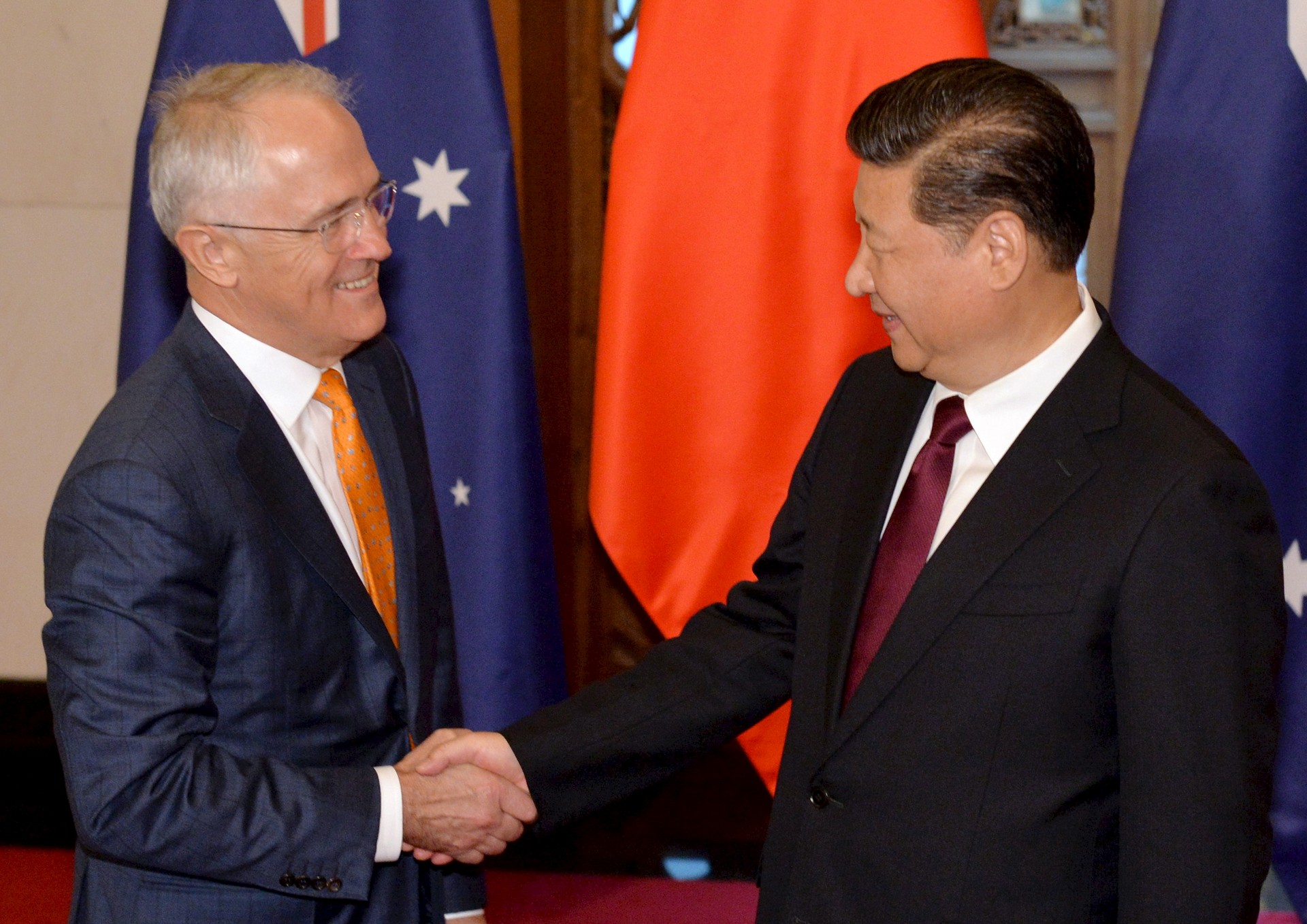Australia’s Dilemma: the Chinese Bearing Gifts
In
Login if you are already registered
(no votes) |
(0 votes) |
Tensions in Australian-Chinese relations spread gloom over developments in the past week. At the Group of Twenty summit in Hangzhou, Chinese President Xi Jinping reproached Malcolm Turnbull for hindering Chinese investment in Australia. At the same time, Labor Senator Sam Dastyari was forced to resign from the opposition’s Shadow Cabinet following a controversy over the payment of his expenses by Chinese organizations. The “New Asian perspectives” blog regards this turbulence as the price Canberra has to pay for its strategy of maneuvering between Beijing and Washington.
Australia started its “pivot to Asia/to the East” (although, formally to the North, in the country’s case) a few decades ago, when, on the one hand, it lost its privileged access to the UK market after the United Kingdom’s accession to the then EEC, and on the other hand – began to clearly realize its role in the economically dynamic Asia-Pacific region. To put it differently, Australia has already come a long way in getting closer to Asia as “not quite an Asian country”, located in close proximity to Asia, but associated historically with Europe. It is also important that foreign states that the country gives priority to are often called Indo-Pacific – an established term in the Australian political lexicon, denoting its concurrent interest in the maritime areas of the two nearest oceans. China occupies the central position in Australia’s Asian equation, particularly from the 1990s, when the growth rate of Japan, which used to be the latter’s major partner in the region, slowed down.

REUTERS/Kenzaburo Fukuhara/Pool
Australian Prime Minister Malcolm Turnbull (L) and Chinese President Xi Jinping shake hands before the meeting at the Diaoyutai State Guesthouse in Beijing on April 15, 2016.
The close partnership with the US and its Asian allies in field of security notwithstanding, Australia appears to have managed to have its cake and eat it too. This was most vividly testified to by the policy of attracting Chinese investment. Although Australia’s investment links with the US appear to be much stronger than those with the PRC (in trade, however, the situation is reverse), in recent years, Chinese investors managed to get access to the capital of strategic assets, namely the port of Darwin, which is important for the US Navy, and Newcastle – a key export hub for the Australian coal.
The signing of a free trade agreement (FTA) immediately after the G20 Brisbane summit in 2014 contributed to promoting economic relations between the Celestial Empire and Australia as well. During his visit to China in April 2016, Prime Minister Malcolm Turnbull reached an agreement on the alignment of the Chinese 21st Century Maritime Silk Route Economic Belt and the development of the northern regions of Australia, which many in the region see as a promising “breadbasket” of the growing class of Asian consumers.
Canberra’s multi-vector foreign policy symbolized Australia’s simultaneous membership in the Asian Development Bank, and the newly-fledged Asian Infrastructure Investment Bank. It is of particular interest to note that tensions in the bilateral relations began during the rule of Malcolm Turnbull, who is not just considered to be more moderate than “pro-American hawk” Tony Abbott, but also has many years of practical experience in business relations with Chinese partners.
Controversy over donations granted to Australian partners by Chinese parapolitical organizations came to light throughout 2016. In February, the media discussed contributions, totaling more than 200 thousand dollars, which Yuhu Group lobbyists of non-recognition of Taiwan transferred to both major Australian parties, namely the Liberal-National Coalition and the Labor Party. At the same time, Chinese public diplomacy increased activity in Australian research institutions, while the Japanese-Chinese rivalry intensified, against the backdrop of escalating territorial disputes in the South China Sea. According to the media, in May, the amount of money transferred to the parties nearly doubled and reached the equivalent of 400 thousand US dollars. The case of the young Senator from New South Wales Sam Dastyari, whose legal expenses were covered by the above mentioned Yuhu Group, while other Chinese organizations paid vor his air passage, was the most controversial example of this trend. Sam Dastyari spoke at several conferences in China, where, according to media reports, expressed an opinion that was at variance with the official position. After the publication of this information, the senator had to move from the parliamentary front benches of the Labor Party to the back ones.
At the same time large investment deals began to falter. In April, Treasurer of the Turnbull government Scott Morrison blocked the sale of Australia’s largest private landholder, S. Kidman and Co, to Chinese companies. The Kidman portfolio covers about 1.3 percent of the nation’s total land area, and 2.5 percent of its agricultural land. In mid-August, Scott Morrison rejected the bid by the Chinese firms to buy Ausgrid energy grid saying that it would be against the national interest. In late August, Chinese companies refused to participate in the bid for the Port of Melbourne. This change in the business climate was met with a hostile reaction from Beijing: the meeting of Xi Jinping and Malcolm Turnbull at the G20 summit in Hangzhou was chilly enough and, according to B20 delegates, the host put its national interests at the top of the agenda to the detriment of others.
On the one hand, the intention of the Australian leadership to retain control over strategic assets of this magnitude seems natural enough and is an established commonplace practice in many other countries. On the other hand, the long-term leasing of Darwin and Newcastle ports, as well as the fact that the Chinese participation in the aforementioned bid had not been blocked until the very last stages of the negotiations, let alone the development of a promising FTA, which entered into force in December 2015, apparently made China perceive Australia – and not without reason – as a country with an exceptionally favorable investment climate. However, the increase in tensions in the South China Sea in recent months could not but reflect adversely on the perception of China by Australian politicians and, probably, has contributed to switching the investment “climate control” mechanism over to cooling. One way or another, there are ASEAN countries that remain Australia’s important political and economic partners, although for the time being Southeast Asia is yielding to China in terms of the number of potential buyers interested in Australian assets.
(no votes) |
(0 votes) |




